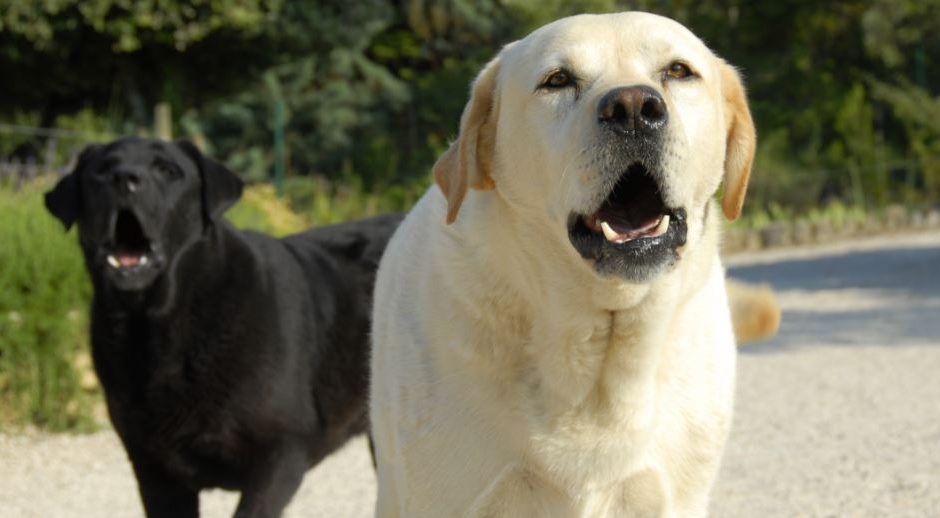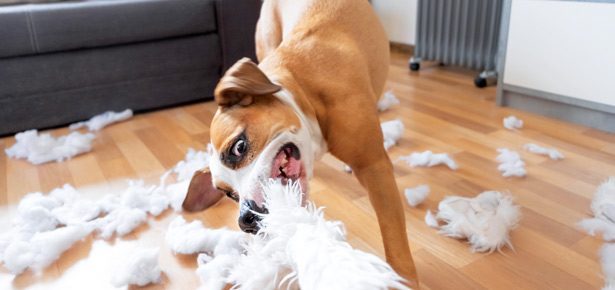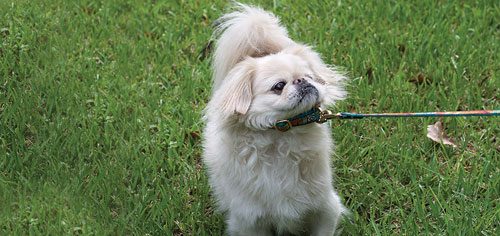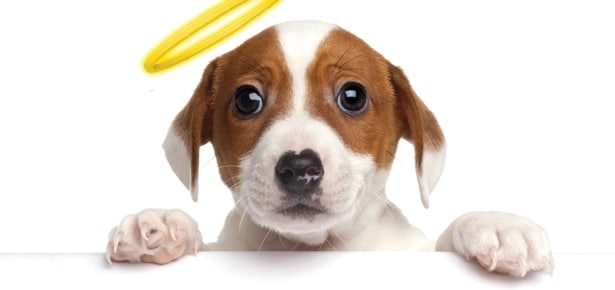
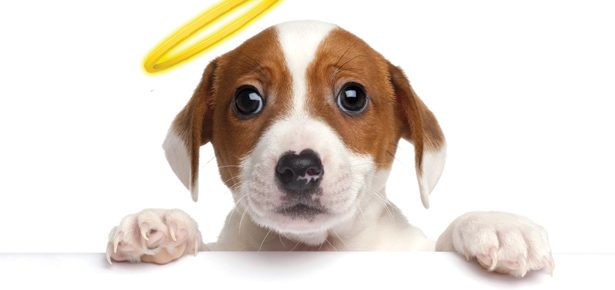
6 Steps to the Perfect Puppy
Follow these steps to raise a happy, well-adjusted dog
Few experiences in life match the joy a new puppy brings. The frolicking, affection, and sheer innocence brighten everyone’s day and add a sweet sense of anticipation to returning home. But that joy can fade to frustration for those not prepared to face the challenges a new pup can bring.
Happily, neither you nor your new puppy need suffer through months of frustration. With the right preparation and the proper plan in place, acclimating your new little friend to life with you can be downright fun. As long as you stick to a routine and trust in your puppy’s ability to adapt, time will turn your new recruit into a happy, reliable new addition to the pack.
#1: Housetraining The key to success here is straightforward; your puppy must be put on a rigid schedule and must be either in your presence or else in a crate, yard or dog pen at all times. Yes, this requires ten to sixteen weeks of extreme vigilance but you are setting your pup up for a lifetime of success. It’s all about the groundwork.
Obtain a properly sized dog crate, which your puppy will eat and sleep in. The crate mimics the close comfort of a den and uses the canine’s innate dislike for eliminating where he sleeps and eats. This is why crate use is the most successful way to housebreak. Choose a plastic crate, which provides a more secure feeling than a cage-type enclosure.
Be sure it is tall enough to let the puppy stand but only long enough to allow her to turn around. It should not be deep enough to let her eliminate in the back and lie down in the front. In most cases, a puppy’s growth rate will require you to move to a larger crate at the four-month stage.
Placement of the crate is up to you; some find it convenient to keep it in their bedroom, while others, knowing the puppy will whine, place it outside of the bedroom. Just know that if you respond to the puppy every time she whines you will be training the puppy to whine for attention.
Next, set up a schedule. Your puppy needs to eliminate in the early morning, after every meal, after play or walks, whenever she gets excited, and right before bedtime. And, for at least a few weeks, you will probably need to let her out sometime in the very early morning before you would normally awaken. Don’t expect her to last more than four hours during the first month or two. The key is to gradually build up her ability to “hold it,” while teaching her that the home is never a place to eliminate.
Feed her in her crate to endear her to it. And commit to her sleeping there; as tempting as it is to respond to whining or crying, if you relent and take her into your bed, you may end up with an accident occurring while you are sleeping. A major benefit of crate training is that your dog will happily settle into a crate should crating be necessary for travel. Never allow your puppy to wander unsupervised in the home until she is thoroughly reliable. Also, be sure to remove all food and water after eight pm. And never leave food down for more than ten minutes. Called free feeding, this makes it difficult to predict when the puppy will need to go. By feeding on a schedule, you “synchronize” your puppy’s system to eliminate predictably.
Never hit or rebuke your puppy for accidents. If she has an accident in front of you, interrupt her, calmly saying “no, no no,” then bring to the preferred spot. Avoid cleaning up messes in her presence as it could teach her that playing with waste is okay. If you stick to the routine, your puppy should soon grasp that eliminating outdoors is the ticket.
#2 When to Begin Socializing Your Puppy Immediately begin introducing your puppy to family, friends, neighbours, and resident dogs, as well as to dogs you know are safe and properly vaccinated, in a calm, safe, controlled environment. The first few months of your puppy’s life are a key socialization window and you need to acclimate her to as many different people and dogs as possible. You must, however, avoid interaction with unknown dogs until your puppy is fully vaccinated, which occurs around the four-month period. After that, socialize her with safe adult dogs and vaccinated puppies as well. When introducing your puppy to new people, have them take a laid-back approach. Frenetic greetings will only teach her to get overexcited whenever greeting, so be sure to keep it composed and dignified. I tell people to practice “calm indifference” with puppies, much as an adult dog would. Doing so will teach her to be tranquil around guests, instead of jumpy or nervous. Get your puppy out of the home as soon as you can, to greet people and to experience the sights and sounds of the world. Take care not to overwhelm her, though, especially during the eight-to-eleven week period known as the fear imprint stage. During this well-defined period of development, if anything frightening occurs—a loud noise, a backfire, a crack of thunder—it will often stay with the dog for life. It is vital, then that you be cautious during this period, and make sure no sudden sounds or scary events occur. If something does scare your puppy, do not comfort or coddle her, as this will just reinforce and legitimize her frightened reaction.
As soon as your puppy passes the four-month immunity stage, take a puppy obedience class with her. You will both learn basic obedience and get lots of socializing time with people and puppies.
#3 How Much Exercise is Too Much Exercise? Be sure to walk your puppy, play with her, and teach her to chase and fetch a toy. But go easy on vigorous exercise for at least four to six months, especially with large breeds, whose fast-growing bones can be damaged by over-exercising. Stick to an easy, slow jog, and keep distances down to half a mile until the dog reaches six months. Avoid roughhousing and beware of older dogs playing rough. Going for group walks with family and friends is a great puppy exercise!
#4 When and How to Groom Your Puppy Softly brush and comb your puppy every day, and bathe her only when needed. This grooming ritual bonds you to her and also allows you to examine her for lumps, bumps, cuts, or injuries. Handle her legs, ears, tail, and feet, and even look in her mouth. And, with a puppy-sized nail clipper, begin tipping her little nails once per week. Just be sure to only snip off about a sixteenth of an inch, to avoid cutting the “quick” and hurting her. Also gently brush or wipe her teeth, using a soft baby toothbrush or a “finger brush,” available at pet stores. You are laying the groundwork for your dog to welcome handling.
#5 What and How Often You Should Feed Your Pup Wean your new puppy off of the breeder/shelter food slowly, over a period of one or two weeks and onto a high quality puppy food. Feed her three times per day at first, but reduce this to twice per day at around three or four months. Feed on a schedule and never leave food down for more than ten minutes. Feed her in her crate and remove the dish when she is done. Handle your puppy’s food dish in front or her; place a treat or two into it, let her eat it, then pick up the dish and place another treat in it. This will prevent food guarding from developing. Be sure to have all family members do this!
Though most food manufacturers recommend keeping a puppy on puppy food for a full year, it’s better to switch over to an adult formula at around six to eight months of age. This is especially true for larger breeds, that can grow too fast while on a higher calorie puppy food. Slow, steady growth is preferred to prevent excess stress on bones, cartilage, and joints. Switching over to an adult food, with its lower calorie load will help moderate growth and minimize the chances of obesity.
#6 How to Raise a Confident, Well Adjusted Dog (It’s all about positive experiences) At three months of age (this is when your puppy is out of the sensitive fear-imprint stage), gradually desensitize her to odd sounds, particularly doorbells, vacuums, lawn mowers, and other potentially distressing noises that can trigger aggression or worry. Take your puppy to the front door and, with a treat in your hand, gently knock on the wood while giving it to her. Praise and repeat. Over a period of days, gradually increase her distance from the door and continue this process of knocking and giving a treat, using a helper to knock. You can do the same with the doorbell.
To desensitize her to the vacuum or some other loud appliance, have someone turn on the noisy appliance inside while you and the puppy play outdoors. The sound should be barely discernable to you at this point. Gradually bring her closer while playing and treating her. Eventually, you should be able to run the vacuum with her indoors without problem.
Take your puppy into your car right away. At first just sit in it with her, giving her a treat or two. Then, with a friend holding her, drive around the block, praise and go inside. Gradually lengthen the time she can drive until it becomes easy for her. Once she is content in the car, use a crate to transport her in for safety’s sake. By patiently following these six steps, by sticking to routine, you’ll be well on your way to having the perfect puppy that you deserve!
Join the newsletter and never miss out on dog content again!
"*" indicates required fields
By clicking the arrow, you agree to our web Terms of Use and Privacy & Cookie Policy. Easy unsubscribe links are provided in every email.



